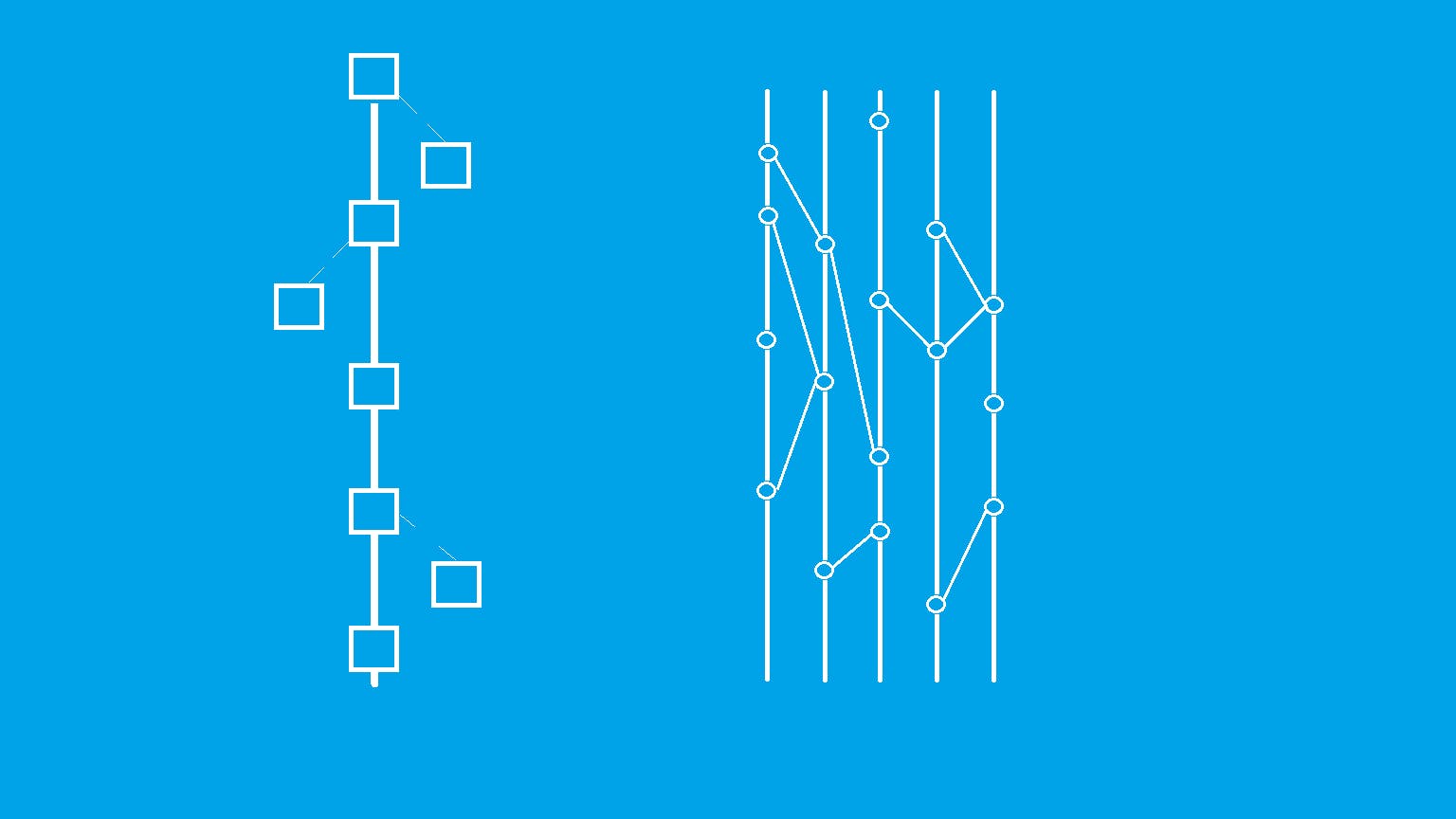
Hedera insights and its impact on DeFi
Is Hedera a game changer for DeFi or just an unfulfilled promise? To find a response to this question, let’s first take a closer look at Hedera!
In the evolving environment of blockchain and DeFi, Hedera stands out as a groundbreaking platform that will redefine the future of digital transactions and DApps.
So, let's get going.
Introduction to Hashgraph
Hedera's Hashgraph blockchain offers a unique take on the blockchain standard. Using DAG (Directed Acyclic Graph), network groups of nodes run parallel, allowing connections between one another to be verified simultaneously and using a randomized structure, allowing for a distributed consensus algorithm. A distributed consensus algorithm allows a community of users to agree in the same order in which some users generate transactions when everyone trusts no single member. That setup allows for a system for generating trust, even if the individuals do not already trust each other.

Imagine a blockchain as a tree that must regularly be trimmed to prevent its branches from becoming unmanageable and to maintain a singular, continuous chain of blocks. Conversely, hashgraph combines new branches in its own structure instead of removing them.
Both blockchain and hashgraph technologies permit any participant to initiate a transaction. This transaction is placed into a "block" and distributed across the network.
In the blockchain model, blocks create a unified chain. If simultaneous blocks are generated, the network's nodes will eventually select one chain for continuation and discard the alternative, preventing the blockchain from splitting into divergent paths. You can imagine it as a constantly trimmed tree, where all but one branch are removed.
Hashgraph, on the other hand, retains every transaction container within the ledger, making it more efficient than blockchain technology. Here, branches are preserved indefinitely and braided into a cohesive ledger.
In the case of blockchain technology, it can falter if blocks are produced too rapidly, leading to uncontrollable branch growth before they can be pruned. This necessitates mechanisms like proof-of-work to slow down the expansion artificially.
That is why hashgraph faces no issue with rapid growth, as no data is discarded. Users are free to generate transactions and blocks at will.
To conclude, hashgraph's architecture, which integrates all transaction blocks into the ledger and avoids the need for pruning potential "forks," enables it to provide stronger mathematical assurances.
Let’s gossip about Gossip
Hashgraph utilizes the Gossip protocol. Think of it like this: out of all nodes in the Hashgraph, we start with the node with the codename Sam. Sam sends data to another random node, Dean. Sam shares everything he knows up to that point with Dean. Subsequently, Sam repeats this process with a different node chosen at random. Dean and all other nodes in the network follow suit, ensuring that any new piece of information quickly spreads throughout the network, reaching every node exponentially.
The act of two nodes exchanging information in this manner is referred to as a gossip sync. When gossip sync is completed, each node involved marks the occasion by generating an event—a data structure that includes a timestamp, possibly several transactions, two-parent hashes, and a digital signature.
Before the gossip sync, these two-parent hashes represent the last events created by the sending node (self-parent) and the receiving node (another parent).
The "gossip about gossip" emerges from tracking the relationships between these events through their parent hashes, forming a DAG or a hashgraph. This structure chronicles the communication patterns between members, expanding directionally as more gossip syncs happen and new events are added. All nodes maintain a local version of the hashgraph, which is continually updated through ongoing syncs.
Although individual hashgraphs may vary momentarily from one node to another, they maintain consistency over time. Consistency here means that if two nodes, such as Sam and Dean, record an event "x," they will also have identical ancestors for "x" and the same connections between those ancestors in their hashgraphs.
Each event in the hashgraph encapsulates the following elements:
- a timestamp marking the event's creation time
- two-parent hashes:
- one from the event immediately preceding this one by the creator (self-parent)
- one from the event shared in the last sync with another node (the other parent)
- an array of transactions, if any, associated with the event
- a digital signature to authenticate the event's origin and integrity
How do transactions work on Hedera?
Hedera utilizes a gossip protocol to distribute information across nodes. When one node learns of a new transaction, it passes this information to another randomly chosen node. This second node then informs yet another node, continuing the pattern set forth by the initial participant. This information-sharing chain spreads until every node in the network is updated with the new transaction details.
Each node records an event upon sharing information, contributing to a DAG.
Unlike traditional blockchain technologies, Hedera doesn’t rely on miners for transaction verification, leading to lower energy consumption and more predictable transaction fees. This makes Hedera a suitable platform for handling transactions of varying magnitudes, catering especially to businesses that engage in numerous blockchain transactions daily.
Key features of Hashgraph
In the fast-growing landscape of distributed ledger technology (DLT), Hashgraph emerges as a groundbreaking alternative to traditional blockchain systems.
This Hashgraph's approach is not just another iteration of existing DLTs but a fundamental reenvisioning of how to achieve consensus. The key features of Hashgraph stand at the core of its distinction, offering a set of capabilities that address some of the most pressing limitations conventional blockchain technologies face.
- Fast transactions, finality, and fees
Hashgraph can process hundreds of thousands of transactions per second (tps), depending on the bandwidth available. This is significantly higher than most blockchain technologies, which are often limited to under 100 tps. With the high number of transactions, Hashgraph can also finalize them almost instantly, compared to other blockchains, which can take minutes. This feature allows for real-time use cases and eliminates concerns about double-spending.
Hashgraph's speed and finality are attributed to its gossip about gossip protocol.
Hedera's fees are designed to be low and predictable, which is a key differentiator from other blockchain platforms that can experience high and variable transaction fees, especially during periods of network congestion. Fees on the Hedera network are categorized into several types, including transaction fees, service fees (for smart contracts, file storage, etc.), and node fees. Transaction fees on Hedera are typically a fraction of a cent per transaction, which is significantly lower than fees on other platforms.
Hedera offers one of the most competitive fee structures among blockchain platforms, especially for applications requiring high throughput and low latency. Its hashgraph consensus mechanism allows it to maintain low and predictable fees, making it an attractive option for various applications.
- Fairness
Hashgraph ensures fairness in transaction ordering thanks to its consensus algorithm, which ensures that the transactions' order reflects the order in which the network received them.
Transaction order is particularly important for applications that require transactions to be processed in a specific order, such as stock trades.
- Security
Hashgraph's Asynchronous Byzantine Fault Tolerance (ABFT) provides robust security against attacks. For consensus to be reached, a supermajority (more than two-thirds) of the network must agree on the transaction order. This consensus model is resilient against DDoS, Sybil, and other attacks that can plague decentralized networks.
- Consensus time stamping
Each event in the Hashgraph is timestamped when consensus is reached, not when the transaction is first submitted. This ensures that the timestamp reflects the network's agreement on when an event occurred, adding another layer of fairness and accuracy for applications that depend on timing.
Hedera’s impact on DeFi
Hedera's future-proof algorithm has the potential to transform the digital transaction realm and create futuristic DApps, with a notable emphasis on the DeFi sector.
Thanks to the DAG's future-proof consensus algorithm, which allows for unparalleled transaction speeds and volume handling, great efficiency and scalability are accomplished. This efficiency supports a more scalable network and ensures that transaction fees remain low and predictable, a key advantage over traditional blockchain networks, where fees can fluctuate wildly.
ABFT offers robust defense against common attacks, thus ensuring the integrity and trustworthiness of DeFi and all platforms and services built on it.
Hedera Hashgraph's smart contracts are built on its unique hashgraph consensus algorithm, which ensures high throughput and fast finality. This foundation is critical for DeFi applications that require real-time transaction processing and absolute certainty in executing complex financial agreements. It is also important to know that Hedera’s smart contracts support Solidity, allowing for a wider audience and support.
Hedera Token Service offers streamlined token creation, management, and transfer on the Hedera platform. It's designed to support fungible and non-fungible tokens (NFTs), providing a versatile foundation for various DeFi applications.
With high TPS and low latency, Hedera is a game-changer for DeFi, allowing for scaling without compromising performance.
With the support of the Interledger Protocol (ILP), Hedera is positioned as a bridge between various DeFi platforms and traditional financial systems. This interoperability is key to unlocking liquidity and enabling seamless movement of assets across different ecosystems.
Lastly, the consensus algorithm is efficient and environmentally friendly, addressing one of the major criticisms of traditional blockchain technology. Hedera presents an attractive platform for DeFi projects that are conscious of their environmental impact.
Wrapping up
Hedera's unique combination of security, scalability, and interoperability make it an important player in the future of blockchain technology. It is clear that it is not just another block in the blockchain but a pivotal point in transforming the digital landscape—we are excited to explore the various ways that Hedera's technology can be utilized in different contexts.
Hey, you! What do you think?
They say knowledge has power only if you pass it on - we hope our blog post gave you valuable insight.
If you want to share your opinion, feel free to contact us.
We'd love to hear what you have to say!